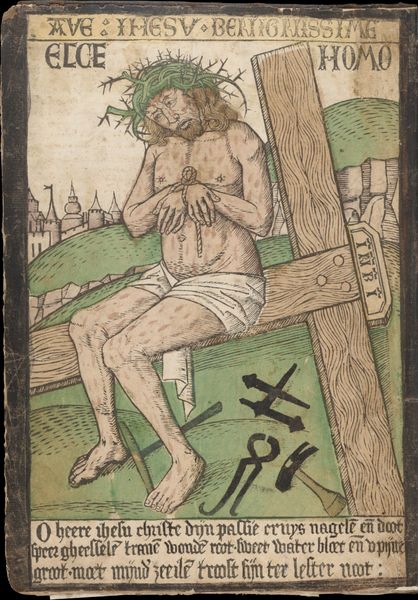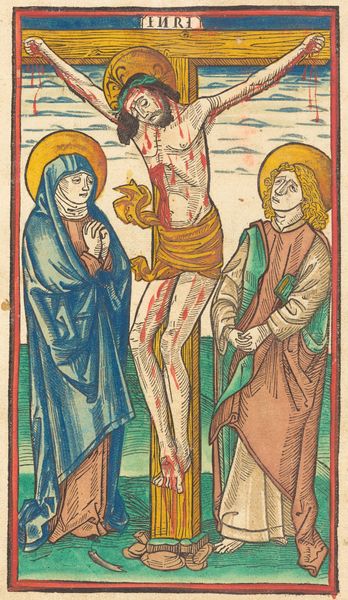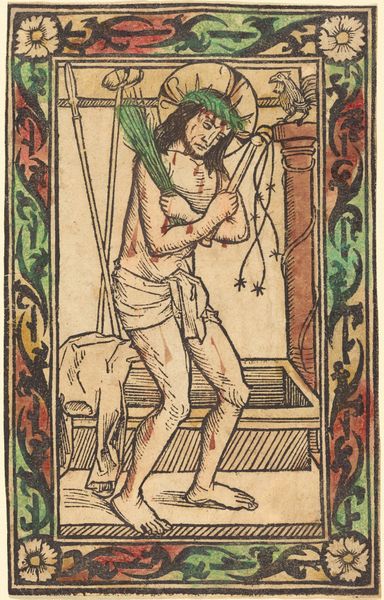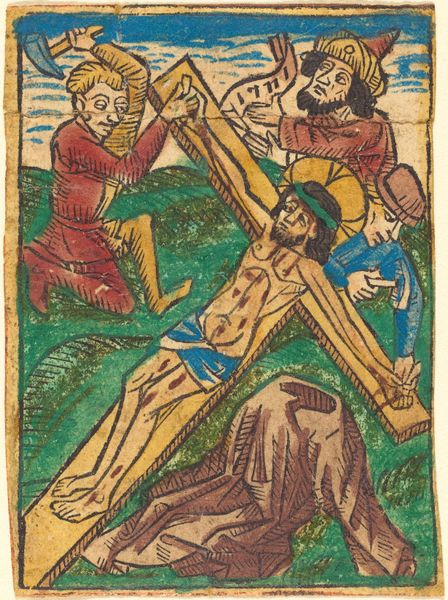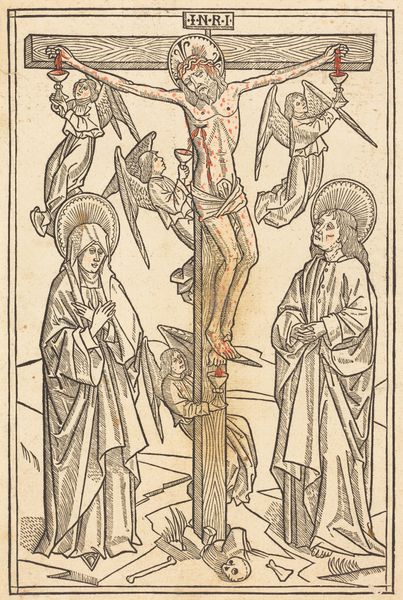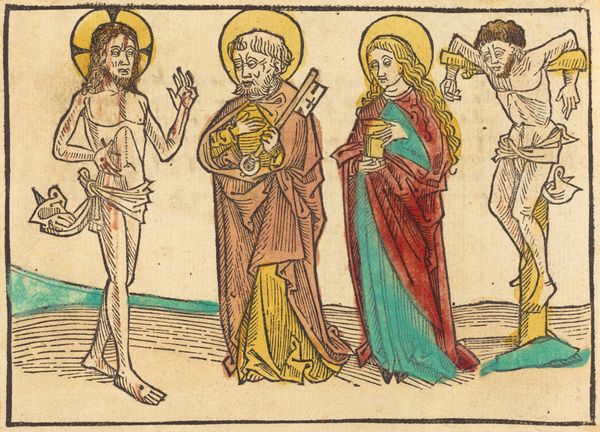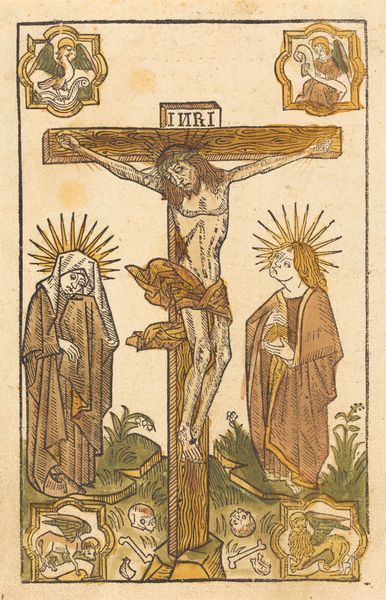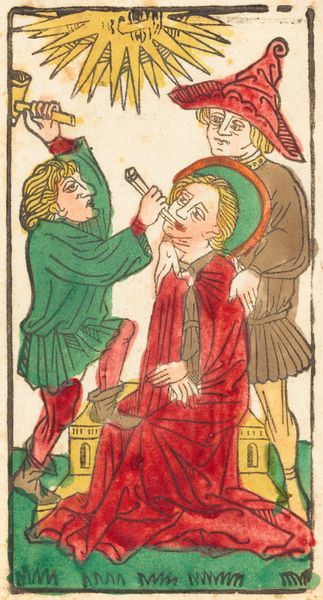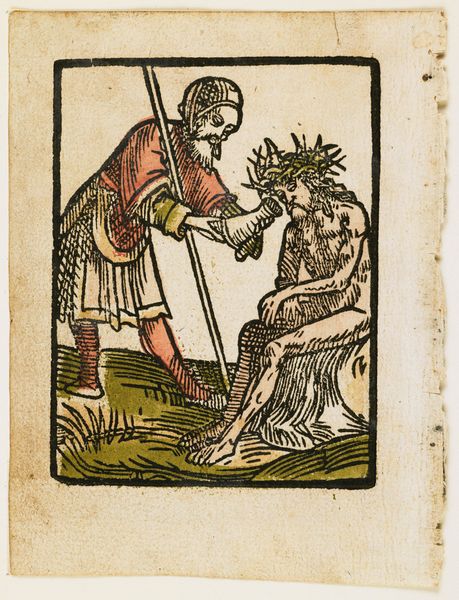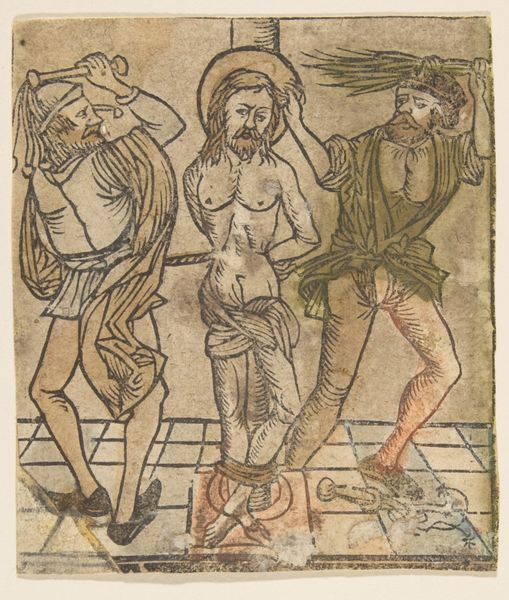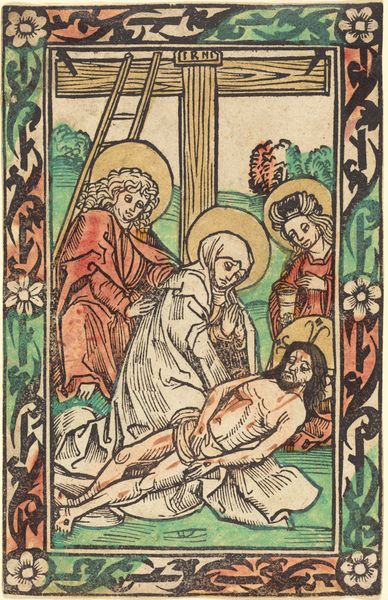
carving, print, woodcut
#
portrait
#
carving
# print
#
gothic
#
stain glass
#
caricature
#
figuration
#
woodcut
#
naive art
#
history-painting
#
northern-renaissance
Copyright: National Gallery of Art: CC0 1.0
Editor: Here we have a woodcut titled "Christ as the Man of Sorrows," created around 1507 by an anonymous artist. The image depicts Christ after the crucifixion, and there's a powerful sense of suffering and vulnerability emanating from the piece. I’m struck by the detail in the woodcut, particularly in the wounds, and I am wondering: what's your perspective on its significance and historical context? Curator: This print is quite moving, isn't it? It is a window into the late Gothic or early Northern Renaissance period. This "Man of Sorrows" motif was incredibly popular then, because of its appeal to the soul; imagine people gathering, heads bowed, reflecting on Christ's pain—sort of heavy, but there's the comfort in contemplating such sacrifice, you know? Editor: Absolutely. I noticed some "primitive art" features of its style. Can you explain its link with its historical and cultural background? Curator: Well, in that period, especially outside the main centers of the Italian Renaissance, we often find that this fusion of profound religious feeling meets a burgeoning artistic and technical interest. See the care taken to represent pain, but rendered through those somewhat abstracted, rather medieval forms? And isn’t the inscription surrounding the image almost a type of frame to enhance contemplation? Editor: Yes, that contrast is fascinating! Curator: Right? Think of it as something in between a stark medieval altarpiece and, maybe, a precursor of a more naturalistic form? Art in progress, if you will. This simple "print", as it is considered, offers a raw expression. What I mean, an intense encounter with a spiritual question. We might see refinement, but its emotive power stems from its simplicity, it's immediacy; What would you add? Editor: I think its powerful emotion is partly the merit of a few features, for example, its apparent artistic simplicity. It’s amazing how much emotion it communicates for a work created over five centuries ago. Curator: Exactly! Beauty isn’t always ornate. It resides in intention, doesn’t it? In the meeting of artist, subject, and the very people beholding it through the ages.
Comments
No comments
Be the first to comment and join the conversation on the ultimate creative platform.
